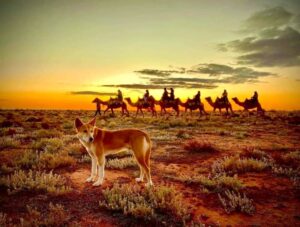
DPA
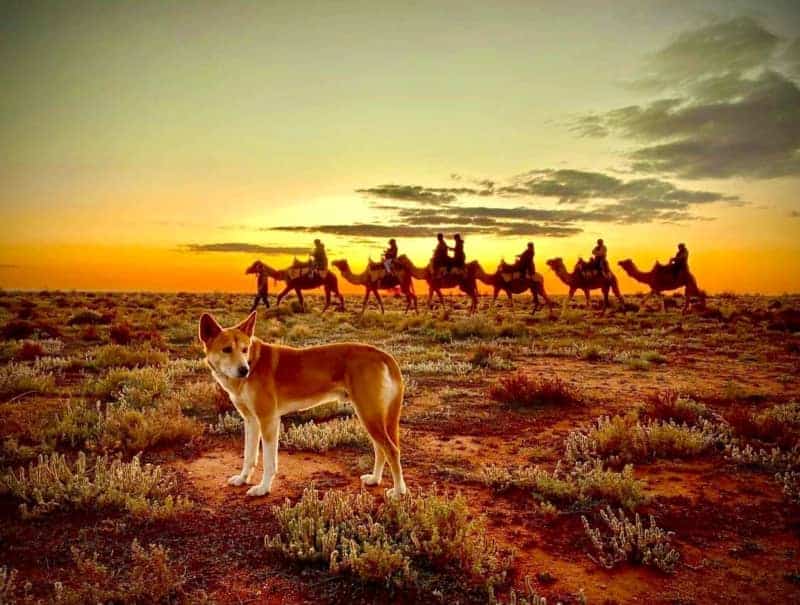
A caravan of camels plods steadily through the desert, majestic despite the blazing heat.
That may make you think of the Sahara but in fact, Australia is home to the world’s largest population of wild camels.
Valued for their endurance, they were brought by the Europeans when they colonized the continent. Nowadays, they tend to be used for recreational purposes.
“There have always been camels out here,” says Shelley Lorensen, president of the Boulia Camel Races that are held in the middle of the outback.
Boulia in Queensland has only about 300 to 400 inhabitants, but some 3,500 people descend on the village in July, when it hosts the race.
Many arrive in caravans or sleep in tents, ready to watch the camels as they race through the red desert sand.
The three-day spectacle also features a lawnmower race, music and fireworks, but the camels are the main attraction, says Lorensen.
But the animals are unpredictable. Their riders cannot steer them or control them. “You can train them,” she says. “It could be a perfect camel, win every race one day and on the next day.” But when race day comes, the camel might just sit down, Lorensen says.
Australia’s camels helped the colonialists explore the outback and transported goods and people alike, after they were brought from India, Afghanistan and the Arabian Peninsula starting in the 1840s.
Camels also provided much of the muscle when it came to major projects such as the Trans-Australian Railway and the Overland Telegraph Line.
Settlements in the outback were dependent on the animals, nicknamed “desert ships,” as camels carried food to the most remote areas of the country.
Camels have been in Silverton on the border between New South Wales and South Australia since the town was founded in the 1880s, says Duncan Pickering. “They transported a lot of the original building materials out here and supplied the local stores,” he says.
Pickering and his partner Petah Devine offer camel tours in the area. They had always dreamed of having a farm in the middle of the outback, living entirely off the land. The camel tours came about by chance.
“We got our first two camels back in March 2017 – the family who used to do camel rides in Silverton, they stopped doing camel rides,” Pickering tells dpa. Now, the couple has 13.
All camels have different personalities and that’s what interests Pickering the most, he says. “They’re all individuals and just very affectionate.”
The troubles start when you train a new one. You have to begin by “learning about their personalities, getting warm with the camels,” he says.
But Australians are no longer as keen on their camels, seeing them as a nuisance.
Many were released into the outback at the start of the 20th century, when they were no longer needed for transport as people switched to cars.
The camels proliferated in the wild, with a population of 1 million according to the Department of the Environment in 2010.
There were 1.2 million by 2020, ABC broadcasting station reported, though the exact number is not known.
When the weather is very hot and dry, camels often head to settlements in search of water. In the process, they wind up tearing down fences to try and reach the condensation in air-conditioning systems. That often causes extensive damage.
That has led officials to allow people to shoot the animals regularly and in large numbers. Local governments and landowners hire snipers and some use helicopters. The camels should be killed as quickly and painlessly as possible, according to the Australian Action Plan for Wild Camels.
Meanwhile estimates suggest that 3,600 to 4,000 camels are killed every year to make animal feed out of their meat. A further 400 animals are exported live, while 1,000 are killed for human consumption.
The main challenge is “trying to save camels and finding a use for their products,” says Paul Martin, who founded Summer Land Camels in 2015, a 324-hectare farm in Harrisville, Queensland.
He and his team have tamed some 400 to 500 camels that they captured in the outback.
Alongside sunrise rides and cocktail evenings with the camels, visitors can try cheese and ice cream made from camel milk or a camelccino in the farm café. The aroma is slightly sweet, and camel milk is packed with vitamin C and iron.
Martin says it has many additional health benefits, including that people who are lactose intolerant can enjoy it too. “It doesn’t curdle in the stomach. It doesn’t create an inflammatory situation like other types of milk do.”
Demand for camel products is slowly increasing, he says.
Alongside the milk products, Summer Land Camels also sells hand creams, body lotion and the world’s first camel vodka, and consumers can buy the products online in some Asian countries.
More is to come. “We are just working on an EU strategy at the moment,” says Martin.
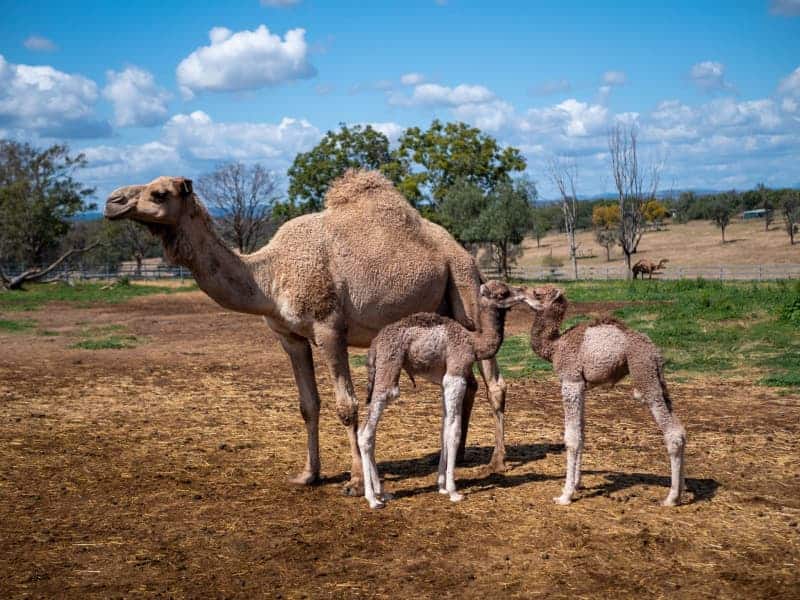
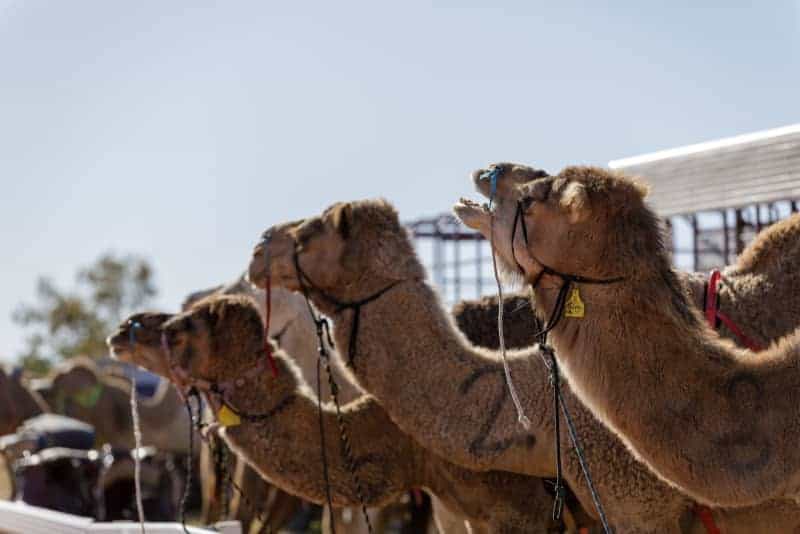
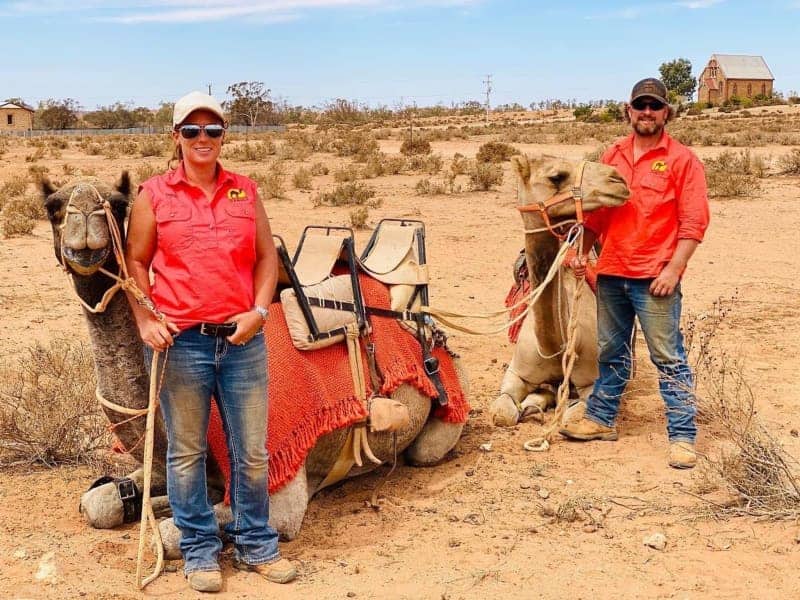
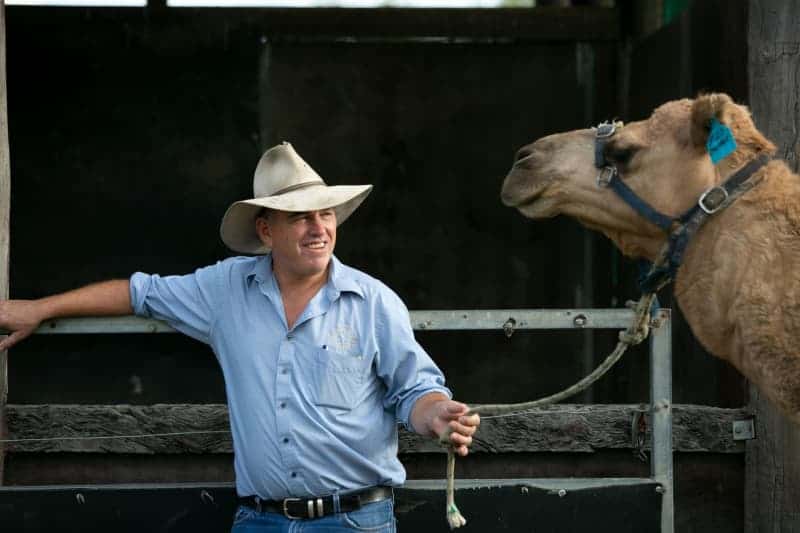


Recommended Comments
There are no comments to display.